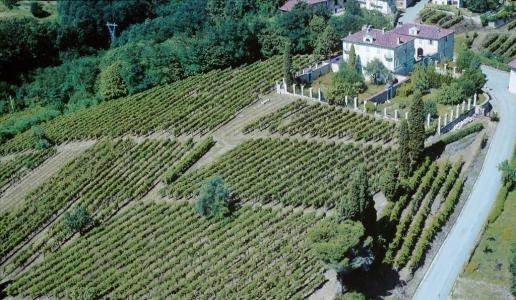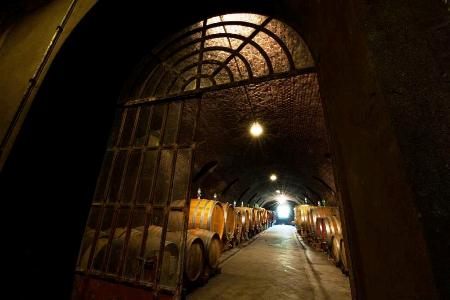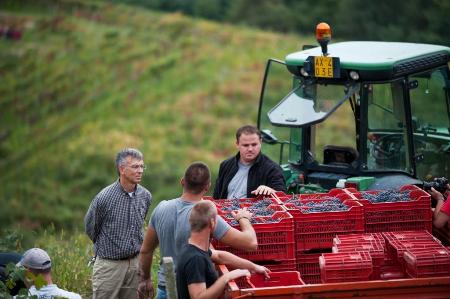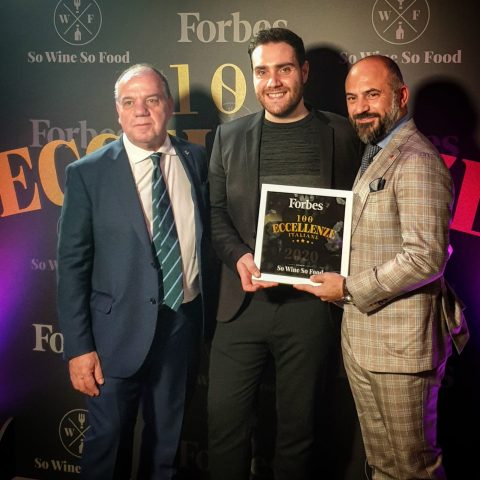Lessona Omaggio a Quintino Sella, the wine of Italy’s unification (1)

Tenuta Sella is a leading estate in the small appellation of Lessona, in northern Piedmont. We spoke with its director Paolo Benassi.
The wine of the Unification of Italy has a name that is little known even to many wine lovers: Lessona. And its history – I’m sorry to say – is much more important than its reality is today, a condition shared by all the great reds of northern Piedmont. When the then-finance Minister Ouintino Sella celebrated the taking of Rome in 1870, the last act in unifying Italy, he opened a bottle of Lessona. Named after the town it is made in, in the province of Biella, Lessona is one of the lesser-known wines of northern Piedmont, an area that is itself too little known. Much worse, over the past 120 years, the vineyard land there has tumbled from 42,000 hectares to only 700.
 In this area the leading grape variety is Nebbiolo Spanna that grows in a soil that is distinctly acidic, extremely varied and sandy. The temperate climate is thanks to the influence of Monte Rosa that ushers in cool breezes towards the end of the summer and through harvest and this fosters the creation of an extraordinary aromatic profile in the wine. Lessona is perhaps more aromatically dark than the other great Piedmont reds with its evident notes of gentian and roots already in its first years, while its body is light yet profound with elegant tannins.
In this area the leading grape variety is Nebbiolo Spanna that grows in a soil that is distinctly acidic, extremely varied and sandy. The temperate climate is thanks to the influence of Monte Rosa that ushers in cool breezes towards the end of the summer and through harvest and this fosters the creation of an extraordinary aromatic profile in the wine. Lessona is perhaps more aromatically dark than the other great Piedmont reds with its evident notes of gentian and roots already in its first years, while its body is light yet profound with elegant tannins.
Lessona is a tiny appellation, just ten hectares, which on an average produces high quality wine and where the leading producer is Tenuta Sella, founded in 1671. Between 1830 and 1840, Giovanni Giacomo Antonio Sella had the manor built as well as the adjoining buildings at the top of the Zoppo vineyard, an excellent cru with a perfect exposure that most likely is the same as the one cited in an act of 1436. In 1870, the estate of Maurizio Sella was split up between his three children Gaudenzio, Quintino and Giuseppe Venanzio Sella, with the latter getting the property in Lessona.
The Sella family then expanded their estate and invested in the area, which was still in large part wild, of Villa del Bosco where they planted new vineyards. Between 1882 and 1884, Carlo Sella, in the name of the heirs of Giuseppe Venanzio, progressively acquired from the town the lots in Villa del Bosco that belonged to Bramaterra and had Don Paolo Andreotti, a priest and scientist, be in charge of their restoration. Then in 1892-93, based on a project drawn up by Gaudenzio Sella, they began to build Cascina Bramaterra, a farm house that still dominates over the estate. A few years later, at the beginning of the 1900s, the vineyards at Bramaterra entered into production and the wine they produced was, and still is, Bramaterra.
Following the death of Giuseppe Venanzio, the great-grandfather of the current owners, cultivation of the vineyards was carried on by his children – great textile industrialists – and above all by his wife Clementina Mosca. Starting in the 1930 and up until the mid-198s, Venanzio took charge of the estate and continued the tradition of excellent quality. He was also key in the wine getting a DOC classification in 1976 for Lessona and in 1979 for Bramaterra. Today the estate is the leading producer of both wines.
We recently spoke with the estate’s current director Paolo Benassi.
 DoctorWine®: What is and where does Lessona Omaggio a Quintino Sella come from?
DoctorWine®: What is and where does Lessona Omaggio a Quintino Sella come from?
Paolo Benassi: Lessona Omaggio a Quintino Sella is made with grapes from the so-called “allo Zoppo” vineyard, the estate’s oldest and most noble vineyard evidence of which can be found as far back as in an act in the 15th century. The vineyard has an excellent exposure and sits at the top of an iron-shaped hill with the top facing south. The west side is bordered by a forest and the hillside has been terraced. The olive and Cyprus trees found in the vineyard create a soft climate as opposed to the decidedly more Alpine one of the northern and western slopes. The soil is composed of sand, some of which dates back to the Pliocene era while another part was blown in from the nearby moraine deposits. The red color is from the presence of ferrous minerals and the wealth of microelements and acidity in the soil give the wine an extraordinary minerality.
DW: What is this authentic cru of a vineyard like?
PB: Vines of all different ages coexist in the vineyard, from three years of age to 70 and more. Aside from Nebbiolo, which is certainly the main varietal present, there is also some Vespolina, a grape native to the area that can add structure and spice to the blend. Winegrowing is carried out according to the dictates of environmental sustainability established by the Region of Piedmont’s program for low-impact agriculture with a yield of no more than 4,000kg per hectare. The same vineyard produces the grapes for the “stock” Lessona as well as the select versions, which differ from the former because the grapes come from the rows with the best exposure and less vigorous vines.
DW: How is Lessona Omaggio a Quintino Sella made in the winery?
PB: In the winery, the harvested grapes are placed on a vibrating table where they are then selected by hand. The time of maceration depends on the quality of the harvest and can vary from two to four weeks, after which the wine matures for 48 months in Slavonian oak barrels. The wine reaches the market usually after it has aged for at least six months in the bottle.
(Tomorrow we will publish the second half of the interview together with a vertical tasting of Lessona Omaggio a Quintino Sella.)
Related Products
| Product | Producer | Date of publication | Author | Read | |
|---|---|---|---|---|---|

|
Tenute Sella
|
04/10/18 | Redazione |
The Sella family are descendants of Quintino Sella who was a textile industrialist and finance minister in the government of Urbano Rattazzi. And it was to their illustrious ancestor that they have... Leggi tutto |

 Italiano
Italiano









